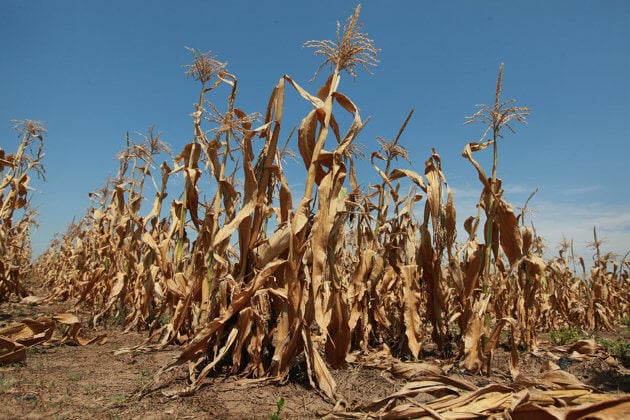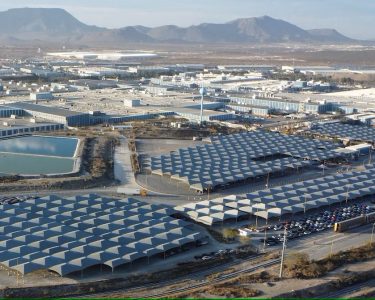
By Phephile Motau
The Food and Agricultural Organisation of the United Nations (FAO) says the El Nino oceanographic phenomenon which is forecast in June 2023 is a key driver of extreme weather events that pose high risks to global security.
The organisation said this in the Global Information and Early Warning System on Food and Agriculture (GIEWS) update on April 26. Eswatini is one of the countries which have been identified as one of the countries at risk of dry conditions should El Nino materialise.
The organisation said the escalation in food insecurity is a consequence of the combined effects of conflicts, economic shocks, and weather extremes.
The GIEWS update states that the world experienced a third consecutive La Niña event in 2022 and early 2023, a rare occurrence that has happened only twice since 1950. The organisation said the 2023 La Niña event officially dissipated in March 2023 and weather forecasts point to a transition to an El Niño state in the second half of 2023.
Rainfall patterns
Rainfall patterns during El Niño events tend to be the reverse of La Niña and drier conditions are generally observed in West Africa, Southern Africa, India, Southeast Asia, Australia, northern areas of South America and Central America.
“Given the high probability of recurrent weather patterns under El Niño conditions, the potential effects on agriculture can be mapped as a means to support interventions that minimise adverse impacts,” the organisation said.
Read More: Horn of Africa drought not possible without climate change – study
The last El Nino event which affected Eswatini was in 2015/2016 when the country experienced a severe El Niño-induced drought.
A study conducted by the Eswatini Economic Policy Analysis and Research Centre (ESEPARC) estimated that the drought cost the economy of Swaziland E3.843 billion which was equivalent to 7.01 per cent of Swaziland’s Gross Domestic Product (GDP) in 2016 or 18.58 per cent of Government expenditure in 2016.
The drought diminished water supply to rural and urban households, caused a significant decline in water levels in rivers, and dams, and to some extent, water reservoirs dried up destroyed wildlife (flora and fauna) and domestic livestock, disturbed the quality of life in households and caused business activity to slow down. Crop production decreased, with maize production dropping by a staggering 67 per cent, which caused households to be fully dependent on the cash economy for food, according to the organisation.
Support
According to the Drought Resilience Profiles-Eswatini by the European Union (EU), during this drought about 620 000 people received support either as in-kind or cash transfers and over 80 000 cattle deaths were recorded.
The report primarily focuses on dry weather conditions, considering the significant impact that water stress has on agricultural production and that a larger area of cropland is affected by rainfall deficits compared to areas expected to receive above-normal precipitation.
According to FAO, their analysis examines cereal crops, given their high share of calories in total food consumption, notably in low-income countries, and, therefore, their importance for food security.
In a map showing the correlation between the El Niño-Southern Oscillation (ENSO) and vegetation conditions in cropland, Eswatini has been placed with countries that indicate an increased frequency of water stress in cropland areas.
The report states that differences exist among countries where water stress is expected and these can in part be attributed to country-specific farm management practices and input use, including irrigation, which can lessen the impact of rainfall deficits. It further states that as the vegetation indicator is an aggregated measurement over a year-long period, the occurrence of drought in only one season in a bimodal rainfall regime, may not be detected.
Croplands
Eswatini is also depicted as falling under cropland areas with a statistically significant correlation between severe water stress and El Niño events. According to the report, these croplands are identified as being most susceptible to El Niño-induced dry weather conditions, with potentially adverse implications on crop yields in 2023/24 if an El Niño event materializes.
FAO said to gain a more comprehensive understanding of the potential effects on cereal production and to help inform what type of assistance would be required, typical rainfall patterns should be examined in combination with crop calendars.
Read More: The pace of rise in global sea level has doubled -UN climate report
It was reported that in fact, water stress normally has a disproportionately larger impact on final yields if it occurs at the reproductive stage, while rainfall deficits have more marginal effects during the latter phenological stages.
“Countries, where the entire crop cycle is affected by drier-than-average weather conditions, are of particular concern, as water deficits could curtail both plantings and yields with compounding negative impacts on the final production,” the report states.
FAO said these countries were in Central America, southern areas of Far East Asia, Southern Africa, and northern parts of South America.
The organisation said potential production declines represent a threat to food security, particularly in Central America and the Caribbean, and Southern Africa, where the prevalence of food insecurity is already high and lower harvests could result in reduced food availability and income-earning opportunities for vulnerable households.
The report further states that in addition, several countries in these regions are currently suffering from economic instability, due to low economic growth, unsustainable debt levels, and foreign exchange shortages, which have contributed to high inflation rates.
Panic Mode
“In the event of a production shock, this economic instability could pose challenges for countries to increase needed imports,” the report states.
A questionnaire was sent to the National Disaster Management Agency (NDMA) Communications Manager Wandile Mavuso on programmes that had been made to alleviate the possible impacts of El Nino, particularly based on how the country was affected in 2016.
Mavuso said management felt it was a bit too early to disclose information regarding this issue.
“We are having an inter-cluster meeting on Thursday next week to deliberate on this issue. It is after that meeting that we can confidently give you accurate information,” he said.
He said they also did not want to send the nation to panic mode, so they must get technical expertise on El Nino before they can divulge any information.
Read More: 3% of the world suffered acute food insecurity in 2022
In a previous interview, the Principal Secretary in the Ministry of Agriculture, Sydney Simelane said the climate cycles indicated that the country was going towards El Nino, which means water would be scarce.
Simelane said in terms of fighting against the effects of climate change, there are two concepts which are adaptation and mitigation. Adaptation, according to Simelane means that we need to learn to live with situations brought by climate change. He said emaSwati needed to adapt and if there is above normal rains this winter, they must harvest it and keep it for drier times.
What countries can do to reduce El Nino effects?
The FAO has made suggestions that countries most susceptible to El Nino effects can follow to mitigate its impact. FAO said the identification of croplands most susceptible to El Niño effects was intended to support preparedness and response planning to minimise the negative impacts on agriculture and food security.
The organisation said it has developed Anticipatory Action (AA) standard procedures to be followed in most countries at risk of being affected by El Niño in 2023/24, where food security is a major concern.
FAO said it was ready to implement agricultural and livelihood-based interventions, in coordination with governments and humanitarian partners, should the El Niño forecast materialise.
Actions
List of anticipatory actions that countries can implement to minimize the potential impacts of droughts and floods on the agriculture sector: Drought conditions:
- Distribution of farming tools and seeds of drought-tolerant crop varieties well in advance of planting seasons.
- Distribution of feed and provision of animal health support, with particular emphasis on chemicals to ensure a regular dipping regime and appropriate vaccination of livestock.
- Rehabilitation of irrigation intakes, canals, and other water points.
- Promotion of capacity development and support to farmers on water-harvesting techniques.
- Developing the capacity of farmers and providing support on post-harvest management and processing to minimise losses.



